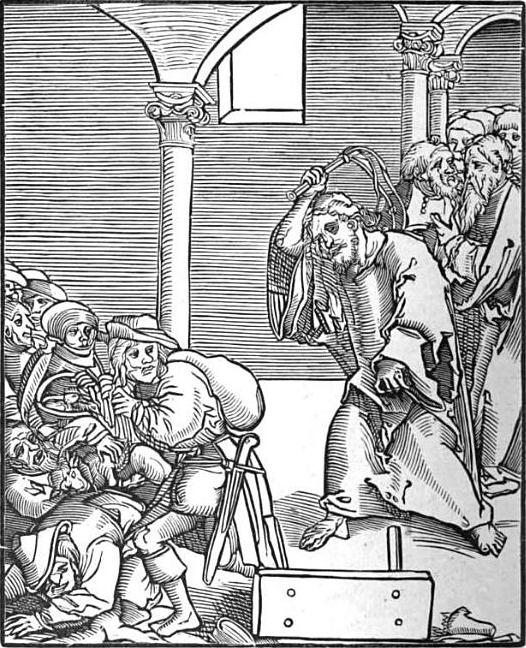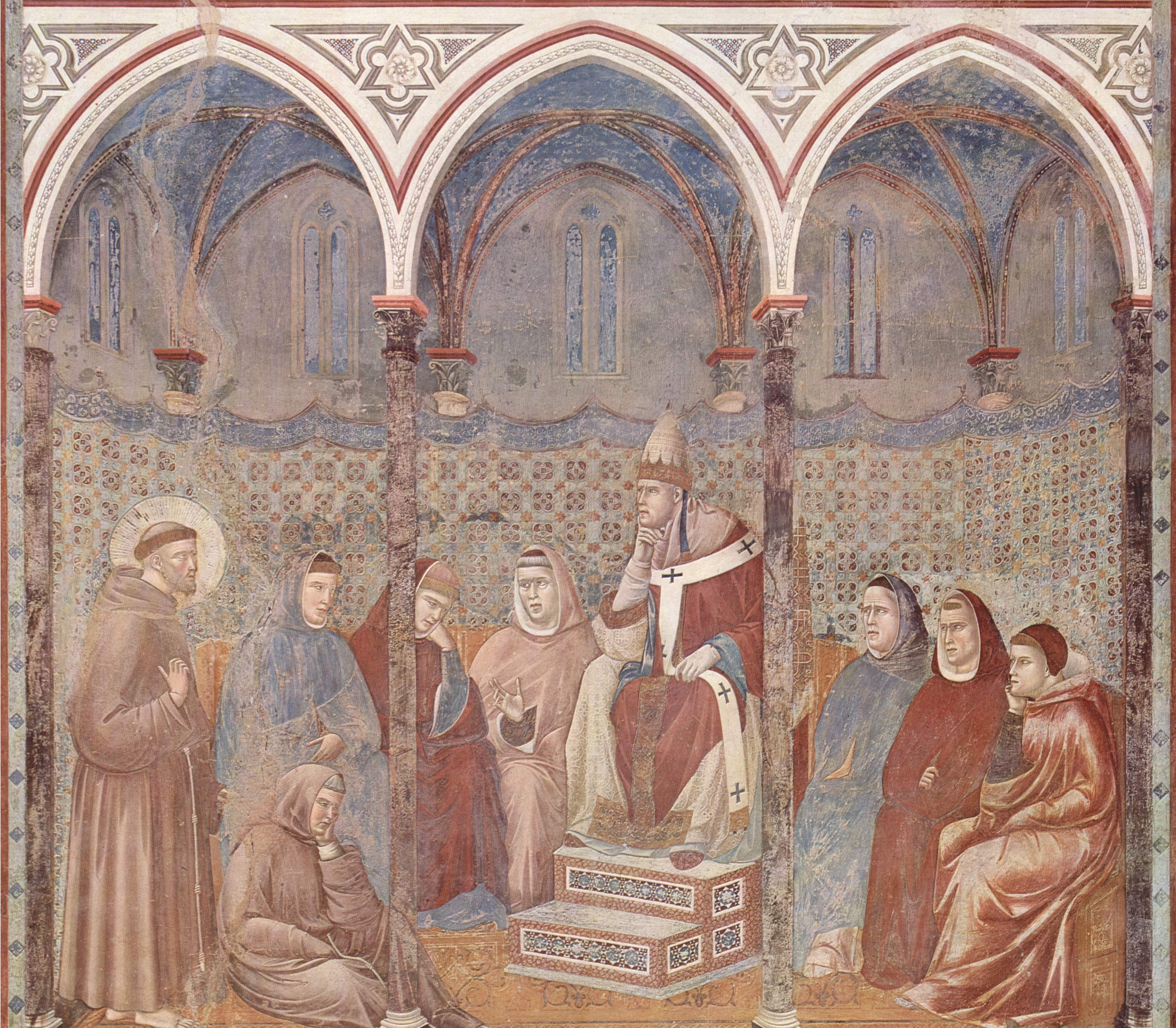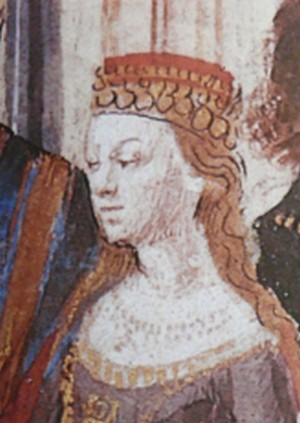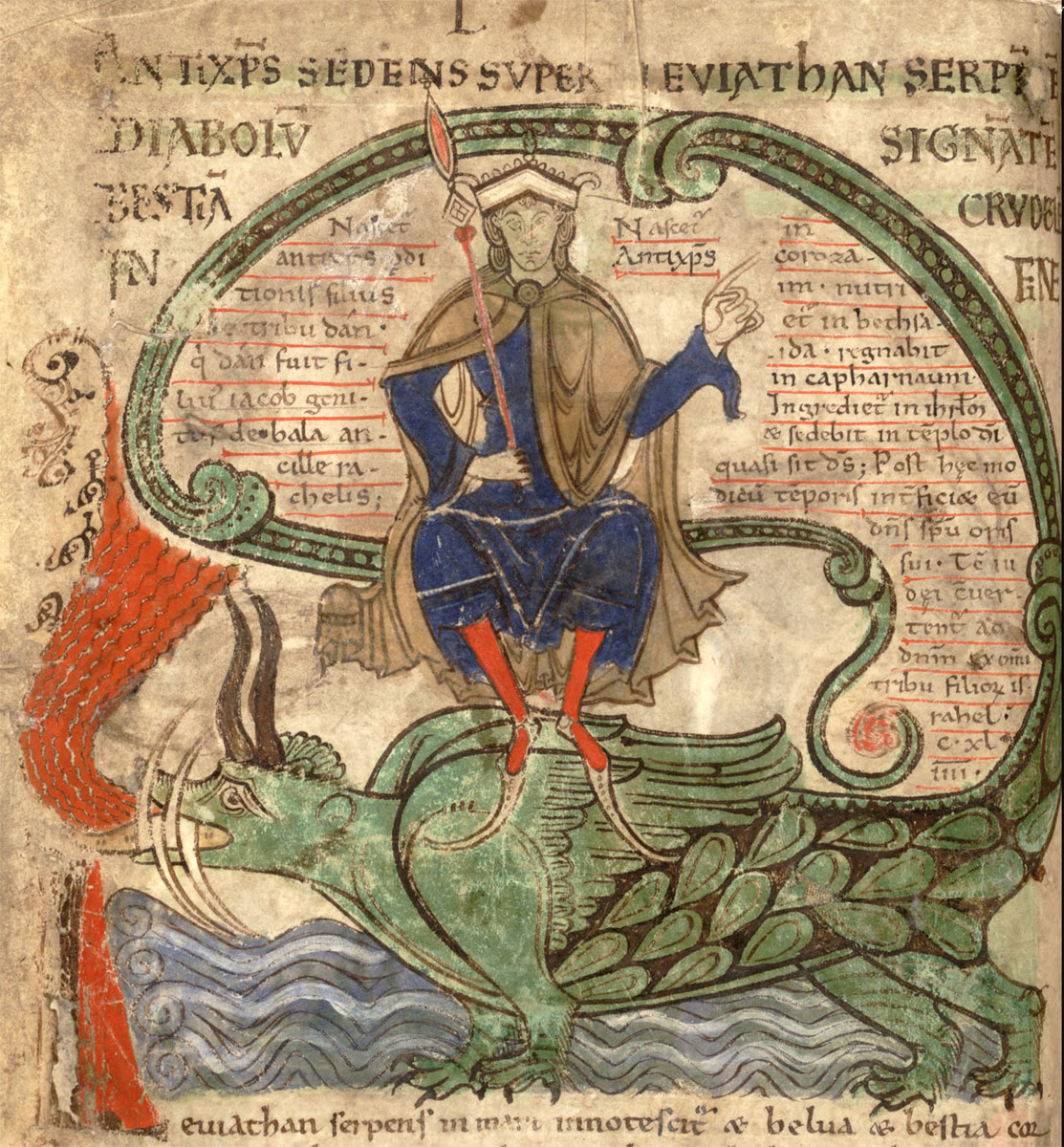|
Robert De Courçon
Robert of Courson or Courçon (also written de Curson, or Curzon;, ''Princes of the Church'', p. 173. 1160/1170 – 1219) was a scholar at the University of Paris and later a cardinal and papal legate. Life Robert of Courson was born in England some time between 1160 and 1170. Little is known about his family or early life. He may have been a member of an Anglo-Norman family originating from the village of Notre-Dame-de-Courson in Normandy. Robert was a student of the Parisian theologian Peter the Chanter - a reference to Peter's death in 1197 in Robert's ''Summa'' indicates that he must have studied with the Chanter near the end of his career in the 1190s. According to Caesarius of Heisterbach, Robert taught theology at the University of Paris, probably starting sometime before 1200 and ending when he became a cardinal priest of Saint Stephen of Mount Celius in 1212. Prior to that time he had served as a judge delegate in Paris. In 1213, when Innocent III proclaimed the Fourt ... [...More Info...] [...Related Items...] OR: [Wikipedia] [Google] [Baidu] |
Cardinal Priest
A cardinal is a senior member of the clergy of the Catholic Church. As titular members of the clergy of the Diocese of Rome, they serve as advisors to the pope, who is the bishop of Rome and the visible head of the worldwide Catholic Church. Cardinals are chosen and formally created by the pope, and typically hold the title for life. Collectively, they constitute the College of Cardinals. The most solemn responsibility of the cardinals is to elect a new pope in a conclave, almost always from among themselves, with a few historical exceptions, when the Holy See is vacant. During the period between a pope's death or resignation and the election of his successor, the day-to-day governance of the Holy See is in the hands of the College of Cardinals. The right to participate in a conclave is limited to cardinals who have not reached the age of 80 years by the day the vacancy occurs. With the pope, cardinals collectively participate in papal consistories, in which matters of importa ... [...More Info...] [...Related Items...] OR: [Wikipedia] [Google] [Baidu] |
Caesarius Of Heisterbach
Caesarius of Heisterbach (c. 1180 – c. 1240), sometimes erroneously called, in English, Caesar of Heisterbach, was the prior of a Cistercian monastery, Heisterbach Abbey, which was located in the Siebengebirge, near the small town of Oberdollendorf, Germany. Life Born about 1170 at or near Cologne, he was educated at the Cathedral School, where he studied the theology of St. Ambrose, St. Augustine, St. Jerome, and St. Gregory the Great; the philosophy of Boethius, and the literary masterpieces of Virgil, Ovid, Seneca, and Claudian. He was a gifted and diligent scholar and upon the completion of his studies was thoroughly conversant with the writings of the Fathers of the Church and master of a refined and fluent Latin style.Ott, Michael. "Caesarius of Heisterbach." The Catholic Encyclopedia Vol. ... [...More Info...] [...Related Items...] OR: [Wikipedia] [Google] [Baidu] |
Usury
Usury () is the practice of making loans that are seen as unfairly enriching the lender. The term may be used in a moral sense—condemning taking advantage of others' misfortunes—or in a legal sense, where an interest rate is charged in excess of the maximum rate that is allowed by law. A loan may be considered usurious because of excessive or abusive interest rates or other factors defined by the laws of a state. Someone who practices usury can be called a ''usurer'', but in modern colloquial English may be called a ''loan shark''. In many historical societies including ancient Christian, Jewish, and Islamic societies, usury meant the charging of interest of any kind, and was considered wrong, or was made illegal. During the Sutra period in India (7th to 2nd centuries BC) there were laws prohibiting the highest castes from practicing usury. Similar condemnations are found in religious texts from Buddhism, Judaism ('' ribbit'' in Hebrew), Christianity, and Islam (''rib ... [...More Info...] [...Related Items...] OR: [Wikipedia] [Google] [Baidu] |
Siege Of Damietta (1218–19)
Battle of Damietta, Sack of Damietta or Siege of Damietta may refer to: *Sack of Damietta (853), a part of the Arab–Byzantine wars *Crusader invasions of Egypt#Siege of Damietta, Siege of Damietta (1169), a part of the Crusader invasions of Egypt *Siege of Damietta (1218–1219), a part of the Fifth Crusade *Siege of Damietta (1249), a part of the Seventh Crusade *Battle of Damietta (1732), a naval battle by the Maltese over the Turks *French campaign in Egypt and Syria#Siege of Damietta, Siege of Damietta (1799), a French victory over the Turks *Battle of Damietta (1973) or Battle of Baltim, a part of the Yom Kippur War {{disambiguation ... [...More Info...] [...Related Items...] OR: [Wikipedia] [Google] [Baidu] |
Fifth Crusade
The Fifth Crusade (September 1217 - August 29, 1221) was a campaign in a series of Crusades by Western Europeans to reacquire Jerusalem and the rest of the Holy Land by first conquering Egypt, ruled by the powerful Ayyubid sultanate, led by al-Adil, brother of Saladin. After the failure of the Fourth Crusade, Innocent III again called for a crusade, and began organizing Crusading armies led by Andrew II of Hungary and Leopold VI of Austria, soon to be joined by John of Brienne, titular King of Jerusalem. An initial campaign in late 1217 in Syria was inconclusive, and Andrew departed. A German army led by cleric Oliver of Paderborn, and a mixed army of Dutch, Flemish and Frisian soldiers led by William I of Holland, then joined the Crusade in Acre, with a goal of first conquering Egypt, viewed as the key to Jerusalem. There, cardinal Pelagius Galvani arrived as papal legate and ''de facto'' leader of the Crusade, supported by John of Brienne and the masters of the Templar ... [...More Info...] [...Related Items...] OR: [Wikipedia] [Google] [Baidu] |
Pope Honorius III
Pope Honorius III (c. 1150 – 18 March 1227), born Cencio Savelli, was head of the Catholic Church and ruler of the Papal States from 18 July 1216 to his death. A canon at the Basilica di Santa Maria Maggiore, he came to hold a number of important administrative positions, including that of Camerlengo. In 1197, he became tutor to the young Frederick II. As pope, he worked to promote the Fifth Crusade, which had been planned under his predecessor, Innocent III. Honorius repeatedly exhorted King Andrew II of Hungary and Emperor Frederick II to fulfill their vows to participate. He also gave approval to the recently formed Dominican and Franciscan religious orders. Early work He was born in Rome as a son of Aimerico, a member of the Roman Savelli family. For a time canon at the church of Santa Maria Maggiore, he later became Camerlengo of the Holy Roman Church on December 5, 1189 and Cardinal Deacon of Santa Lucia in Silice on 20 February 1193. Under Pope Clement III and P ... [...More Info...] [...Related Items...] OR: [Wikipedia] [Google] [Baidu] |
Bourges
Bourges ( ; ; ''Borges'' in Berrichon) is a commune in central France on the river Yèvre (Cher), Yèvre. It is the capital of the Departments of France, department of Cher (department), Cher, and also was the capital city of the former provinces of France, province of Berry (province), Berry. History The name of the commune derives either from the Bituriges Cubi, Bituriges, the name of the original inhabitants, or from the Germanic languages, Germanic word ''wikt:burg, Burg'' (French: ''bourg''; Spanish: ''burgo''; English, others: ''burgh'', ''wikt:berg, berg'', or ''borough''), for "hill" or "village". The Celts called it ''Avaricon''; Latin-speakers: ''Avaricum''. In the fourth century BC, as in the time of Julius Caesar, Caesar, the area around it was the center of a Gallic (Celtic) confederacy. In 52 BC, the sixth year of the Gallic Wars, while the Gauls implemented a scorched-earth policy to try to deny Caesar's forces supplies, the inhabitants of Avaricum convinced th ... [...More Info...] [...Related Items...] OR: [Wikipedia] [Google] [Baidu] |
Albigensian Crusade
The Albigensian Crusade (), also known as the Cathar Crusade (1209–1229), was a military and ideological campaign initiated by Pope Innocent III to eliminate Catharism in Languedoc, what is now southern France. The Crusade was prosecuted primarily by the French crown and promptly took on a political aspect. It resulted in the significant reduction of practicing Cathars and a realignment of the County of Toulouse with the French crown. The distinct regional culture of Languedoc was also diminished. The Cathars originated from an anti-materialist reform movement within the Bogomil churches of the Balkans calling for what they saw as a return to the Christian message of perfection, poverty and preaching, combined with a rejection of the physical. The reforms were a reaction against the often perceived scandalous and dissolute lifestyles of the Catholic clergy. Their theology, Gnostic in many ways, was basically dualistic cosmology, dualist. Several of their practices, especially ... [...More Info...] [...Related Items...] OR: [Wikipedia] [Google] [Baidu] |
Philip Augustus
Philip II (21 August 1165 – 14 July 1223), also known as Philip Augustus (), was King of France from 1180 to 1223. His predecessors had been known as kings of the Franks (Latin: ''rex Francorum''), but from 1190 onward, Philip became the first French monarch to style himself "King of France" (''rex Francie''). The son of King Louis VII and his third wife, Adela of Champagne, he was originally nicknamed () because he was a first son and born late in his father's life. Philip was given the epithet "Augustus" by the chronicler Rigord for having extended the crown lands of France so remarkably. After decades of conflicts with the House of Plantagenet, Philip succeeded in putting an end to the Angevin Empire by defeating a coalition of his rivals at the Battle of Bouvines in 1214. This victory would have a lasting impact on western European politics: the authority of the French king became unchallenged, while John, King of England, was forced by his barons to assent to Magna Car ... [...More Info...] [...Related Items...] OR: [Wikipedia] [Google] [Baidu] |
King John Of England
John (24 December 1166 – 19 October 1216) was King of England from 1199 until his death in 1216. He lost the Duchy of Normandy and most of his other French lands to King Philip II of France, resulting in the collapse of the Angevin Empire and contributing to the subsequent growth in power of the French Capetian dynasty during the 13th century. The First Barons' War, baronial revolt at the end of John's reign led to the sealing of Magna Carta, a document considered a foundational milestone in English and later British constitution of the United Kingdom, constitutional history. John was the youngest son of King Henry II of England and Duchess Eleanor of Aquitaine. He was nicknamed John Lackland () because, as a younger son, he was not expected to inherit significant lands. He became Henry's favourite child following the failed revolt of 1173–1174 by his brothers Henry the Young King, Richard I of England, Richard, and Geoffrey II, Duke of Brittany, Geoffrey against their ... [...More Info...] [...Related Items...] OR: [Wikipedia] [Google] [Baidu] |
Pigache
The pigache, also known #Names, by other names, was a kind of shoe with a sharp upturned point at the toes that 1100-1200 in European fashion, became popular in Western Europe during the Romanesque Period. The same name is also sometimes applied to earlier similar Byzantine culture, Byzantine footwear. Names The English language, English name ''pigache'' was borrowing (linguistics), borrowed from French language, French, where the name was originally used for a kind of hoe (tool), hoe and as a hunting term for a wild boar hoofprint longer on one side than the other. It appeared in Medieval Latin as . and . The pigache is also known as the pigage,. pulley shoe,. pulley toe,. or pulley-toe shoe. Less often, Orderic Vitalis's terms of opprobrium are reworked into names: scorpion's tail or ram's horn shoe. The name ''pigache'' is also sometimes also applied to earlier pointed Byzantine culture, Byzantine footwear from as early as the 5th century. It is also simply glossed as a ... [...More Info...] [...Related Items...] OR: [Wikipedia] [Google] [Baidu] |
Aristotle
Aristotle (; 384–322 BC) was an Ancient Greek philosophy, Ancient Greek philosopher and polymath. His writings cover a broad range of subjects spanning the natural sciences, philosophy, linguistics, economics, politics, psychology, and the arts. As the founder of the Peripatetic school of philosophy in the Lyceum (classical), Lyceum in Athens, he began the wider Aristotelianism, Aristotelian tradition that followed, which set the groundwork for the development of modern science. Little is known about Aristotle's life. He was born in the city of Stagira (ancient city), Stagira in northern Greece during the Classical Greece, Classical period. His father, Nicomachus (father of Aristotle), Nicomachus, died when Aristotle was a child, and he was brought up by a guardian. At around eighteen years old, he joined Plato's Platonic Academy, Academy in Athens and remained there until the age of thirty seven (). Shortly after Plato died, Aristotle left Athens and, at the request ... [...More Info...] [...Related Items...] OR: [Wikipedia] [Google] [Baidu] |









